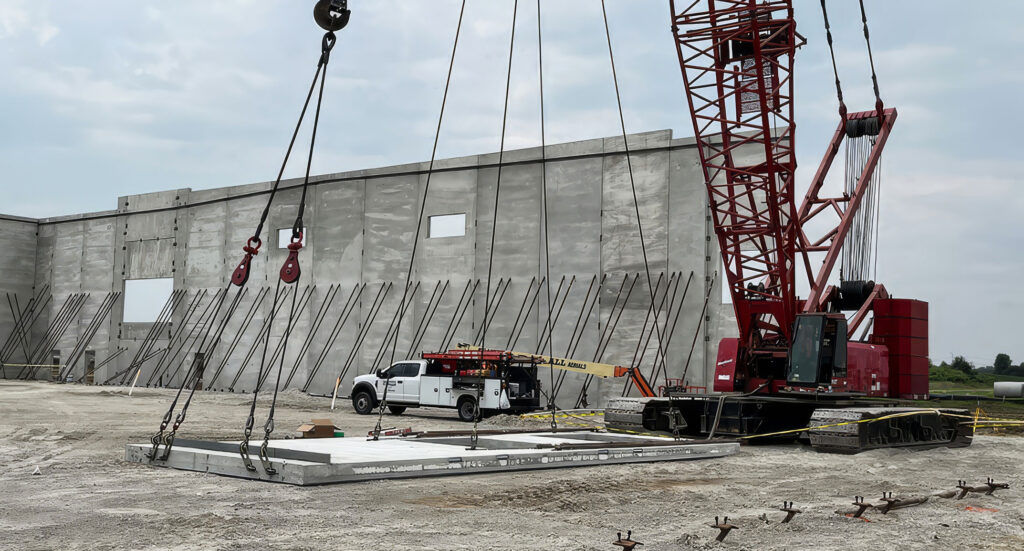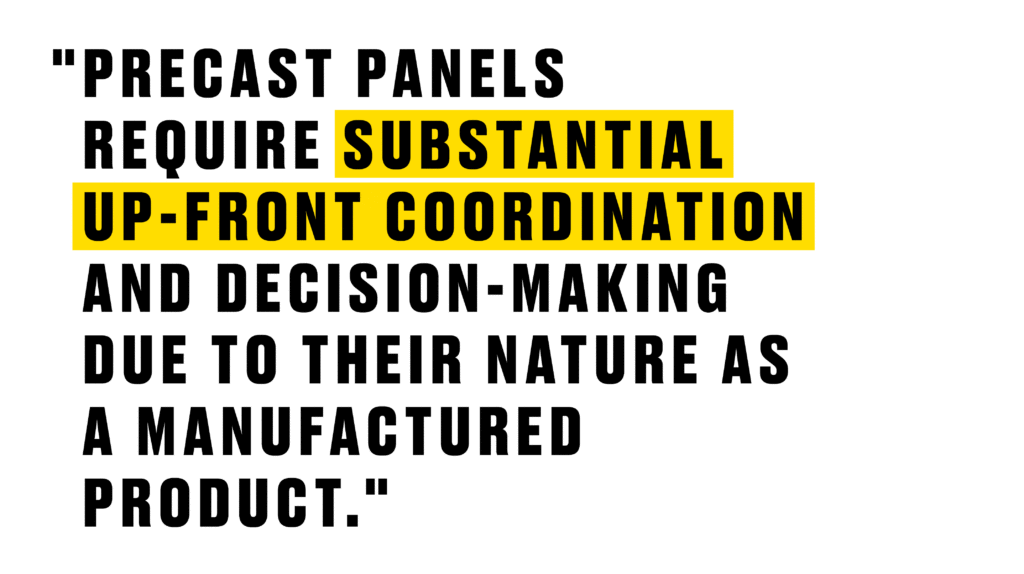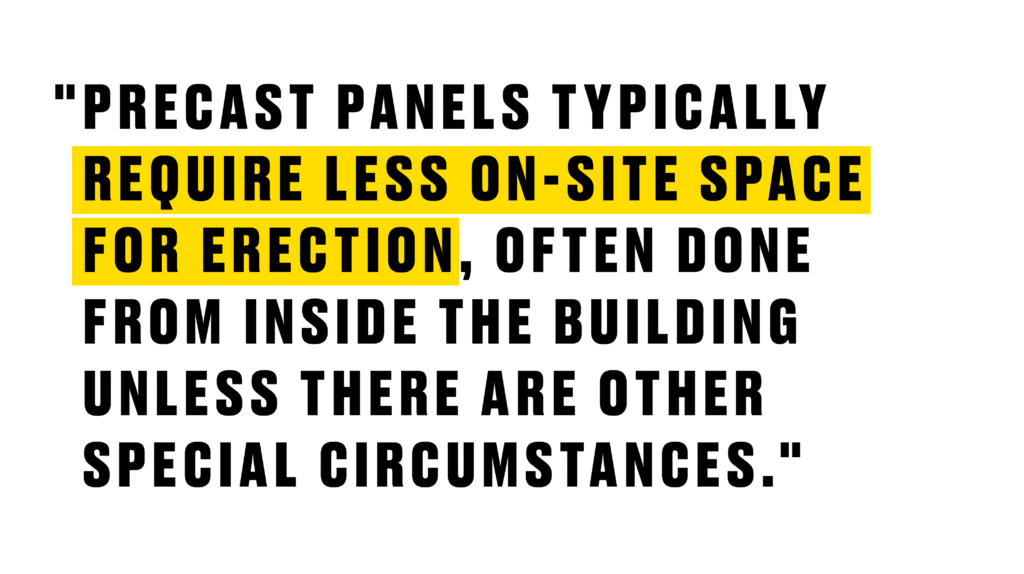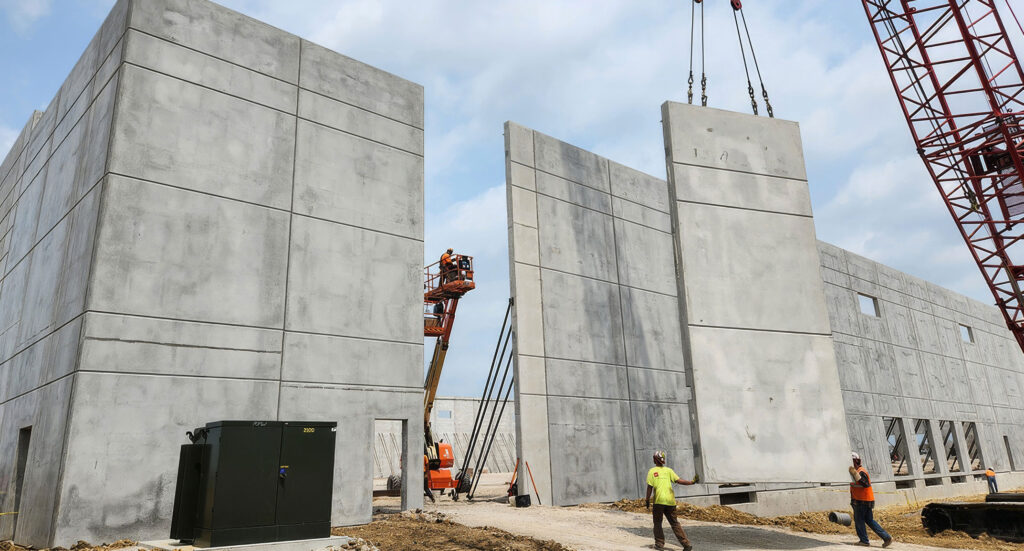In the realm of commercial industrial development, precast concrete wall panels have emerged as a pivotal decision factor.
Like solving a Rubik’s cube, each project demands the right strategies to overcome inherent challenges and achieve goals.

Precast concrete wall panels, with their distinct features and advantages, play a crucial role in this decision-making process.
Size and Shape Flexibility: Precast wall panels are manufactured off-site and need to fit on a truck for delivery, which impacts their size and shape. Despite this, they offer significant design flexibility, albeit with some limitations compared to tilt-up panels.
Production and Erection: Precast panels are produced in advance and delivered to the job site when needed. This process contrasts with the on-site production of tilt-up panels, as it is less dependent on space and weather conditions. Precast panel erection typically utilizes smaller cranes, enhancing flexibility in erection logistics.
Coordination and Decision Making: Precast panels require substantial up-front coordination and decision-making due to their nature as a manufactured product. This process is critical in timely customizations and manufacturing efficiencies.

Overall Quality: Precast wall panels are known for their high-quality, as they are manufactured in a standardized and regulated process. This ensures consistent quality and performance, a critical aspect for many projects.
Weather Impact: Precast panels, being cast off-site in controlled conditions, are not affected by weather during the manufacturing process. Their erection requires less space on site, making them a preferable option in weather-sensitive scenarios.
Site Logistics: Precast panels typically require less on-site space for erection, often done from inside the building unless there are other special circumstances. This allows for concurrent work in multiple areas of the project outside the building footprint, thereby optimizing site logistics, efficiencies, and minimizing schedule delays and weather-related risk.

Conclusion: For projects considering the use of precast concrete panels, it’s vital to weigh these factors against the project’s specific needs and priorities. Precast panels offer distinct advantages in quality, logistics, and weather tolerance, making them a solid choice for many commercial industrial developments.








